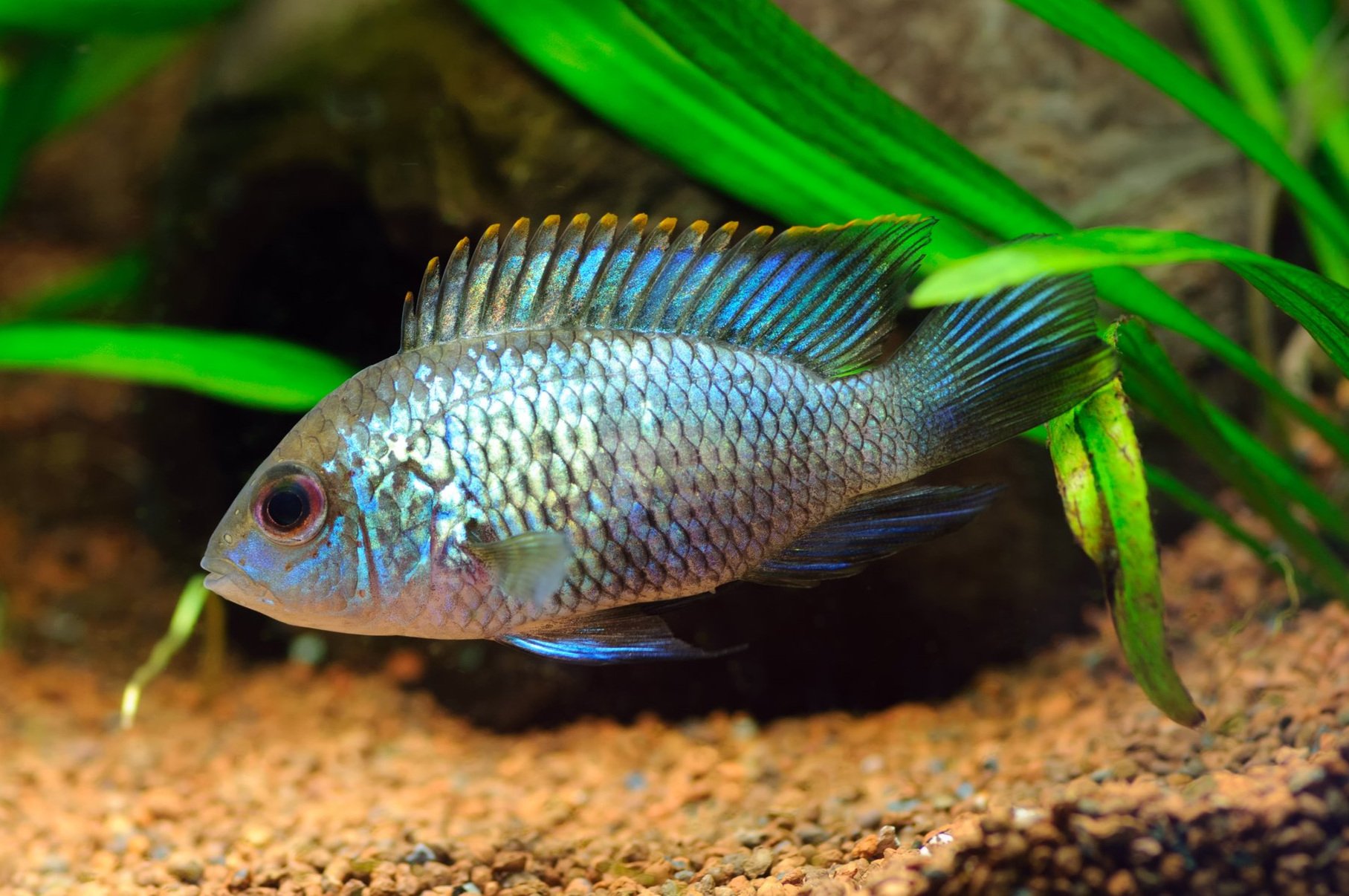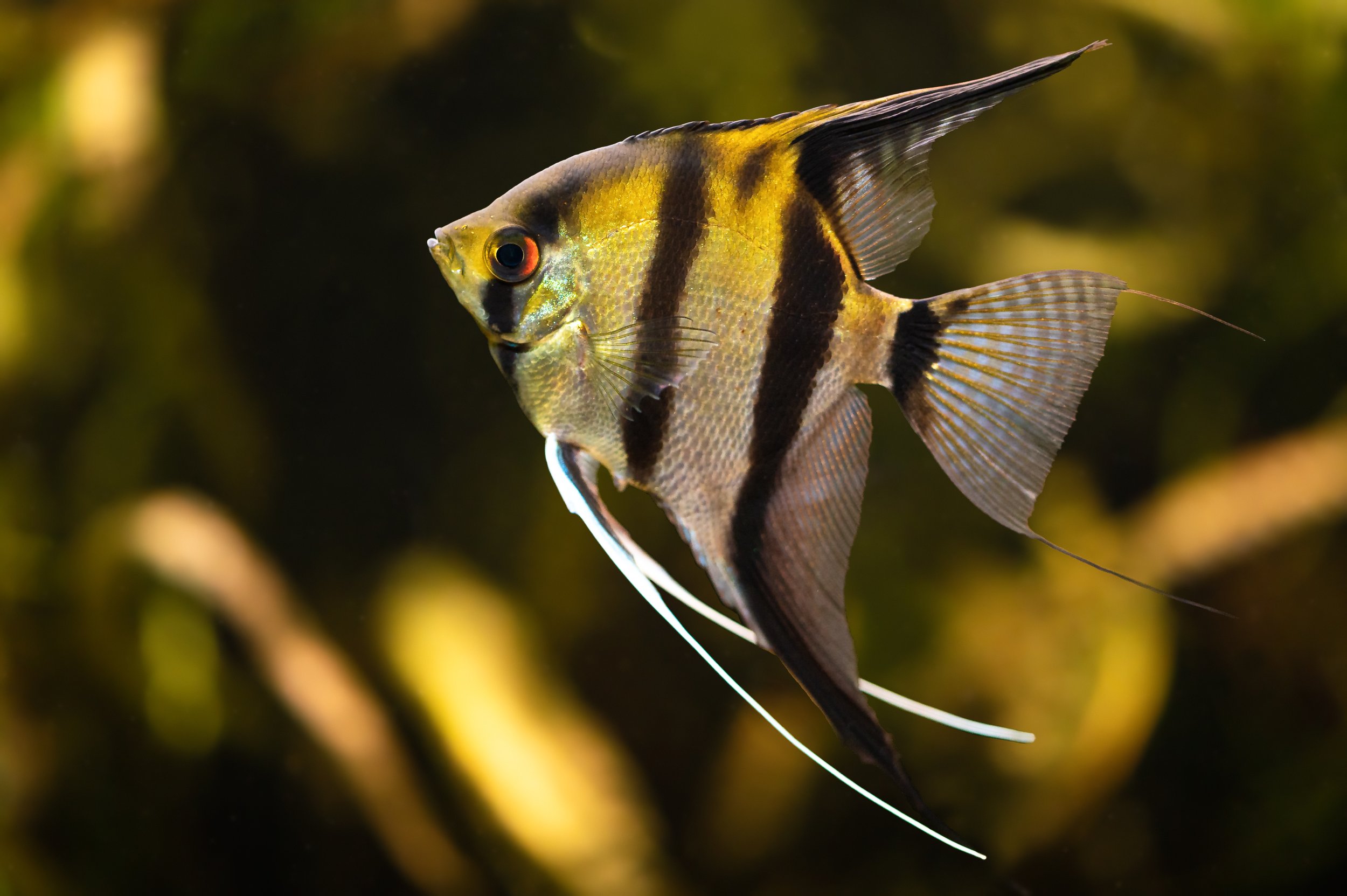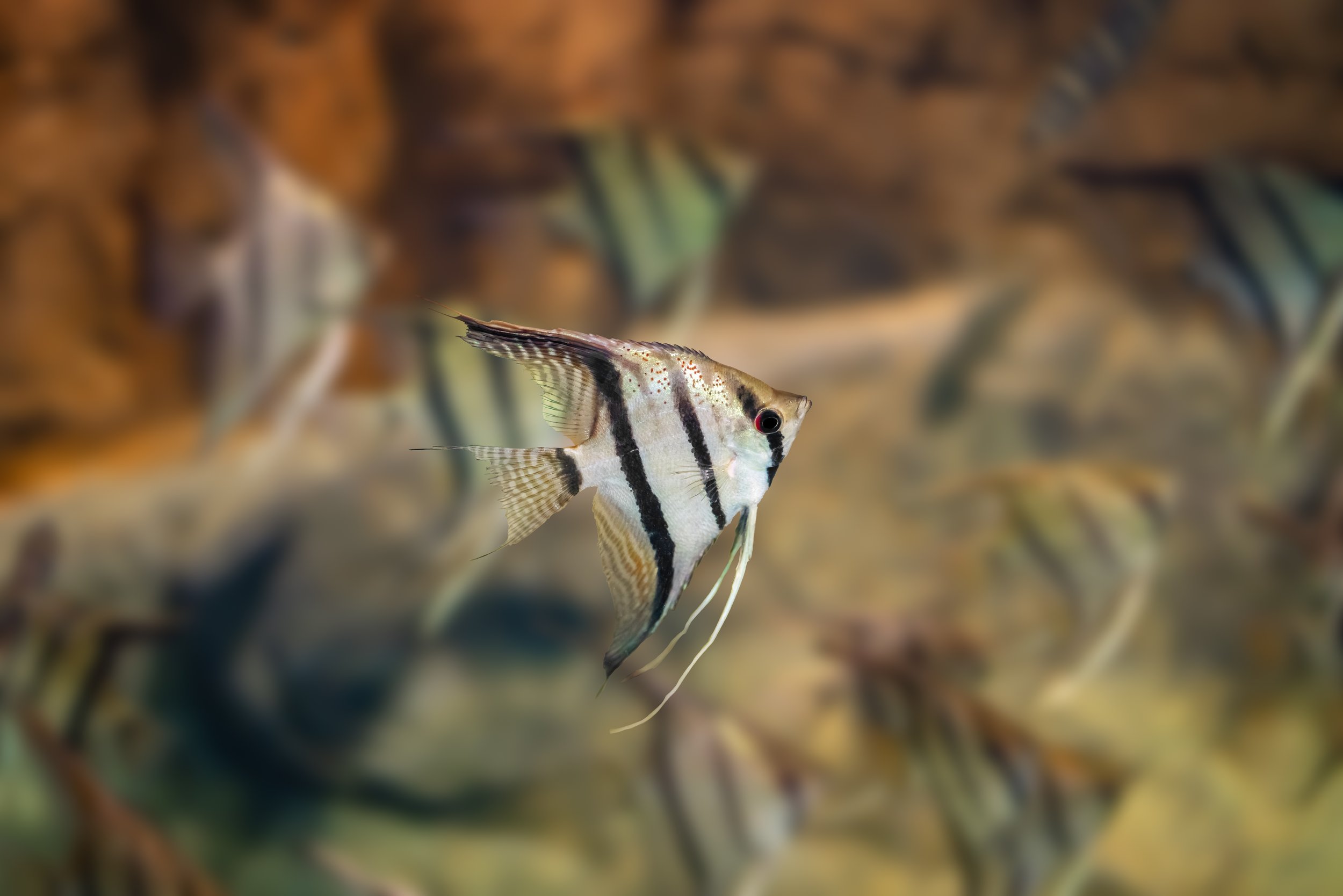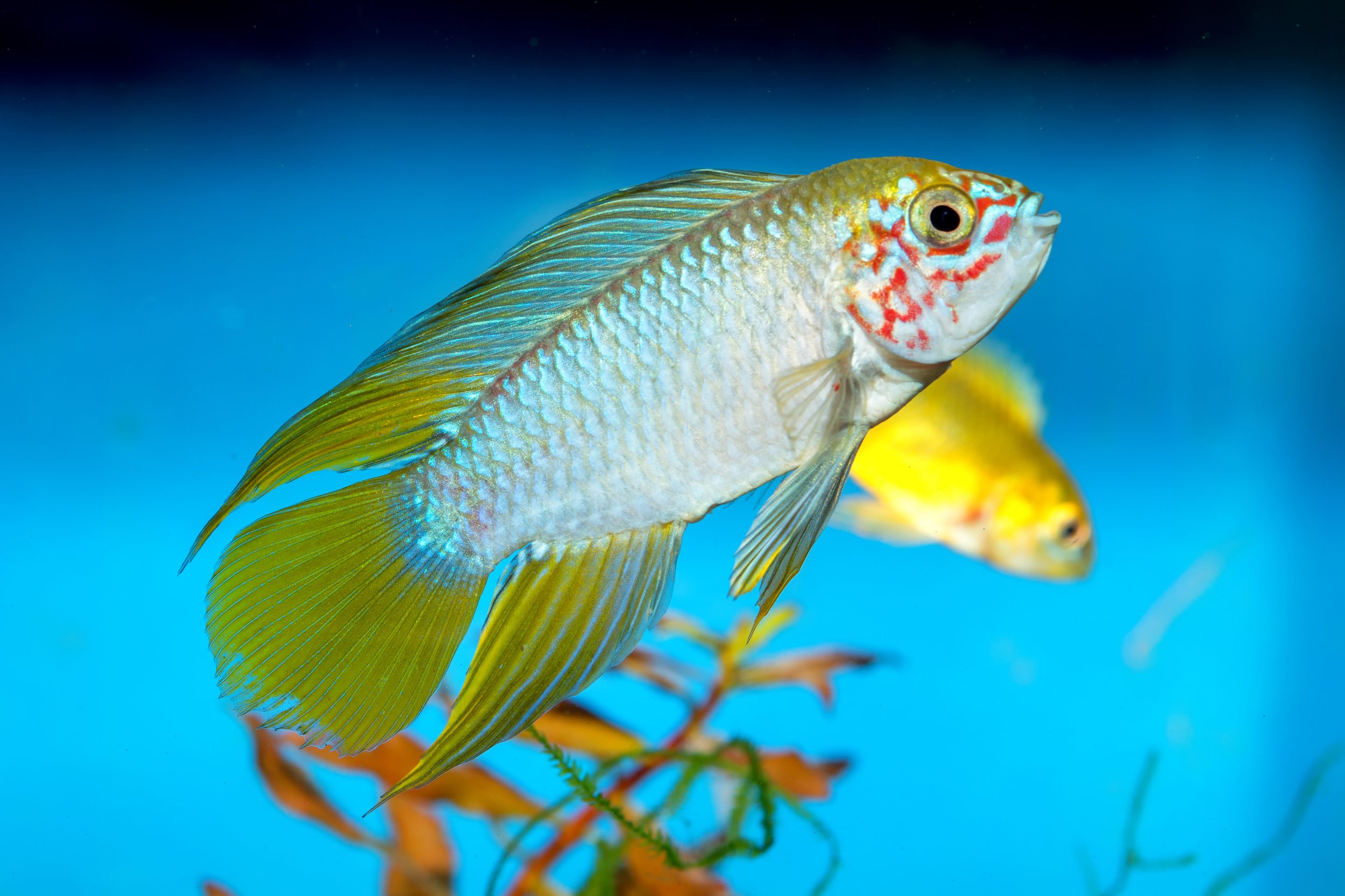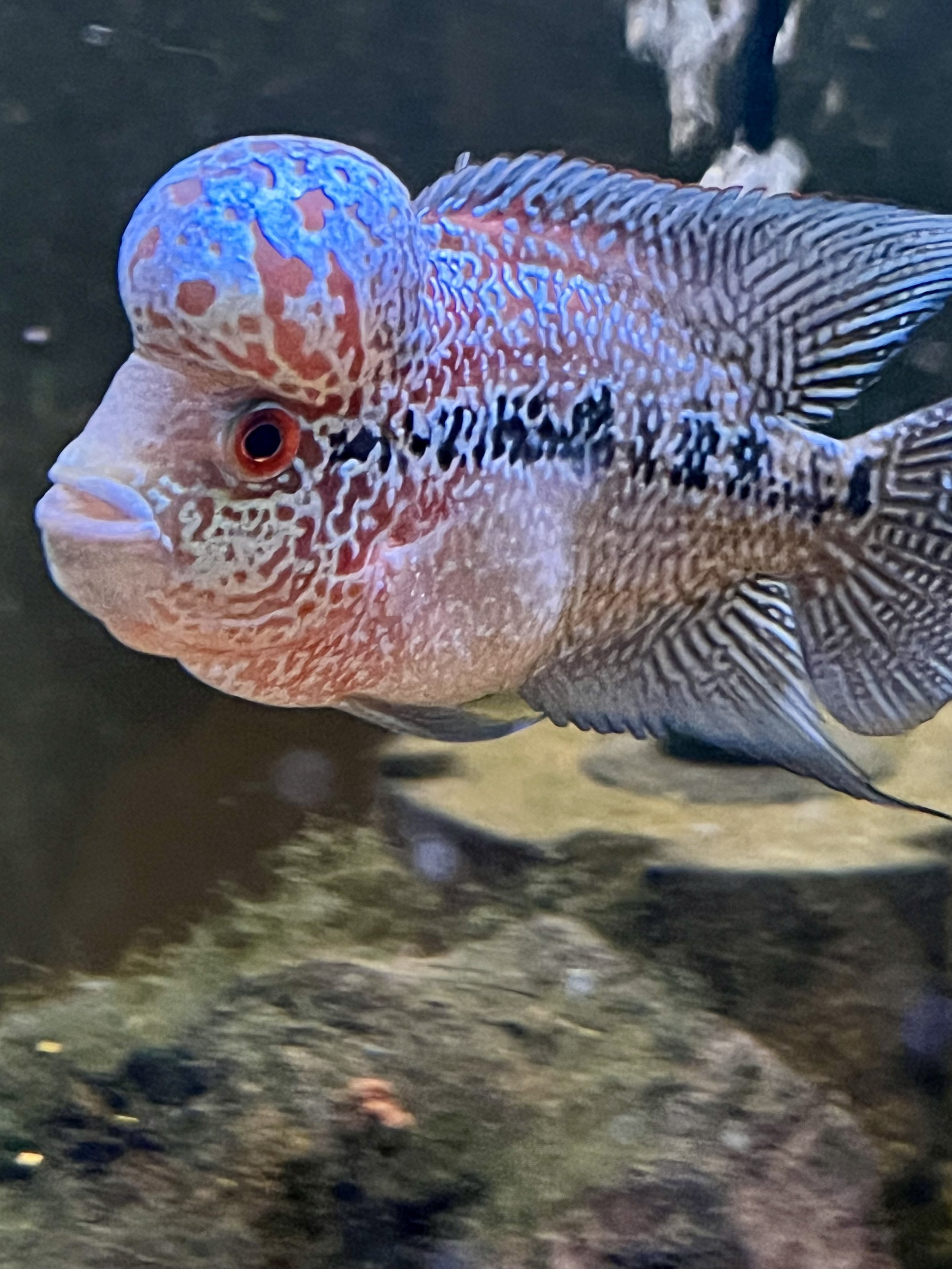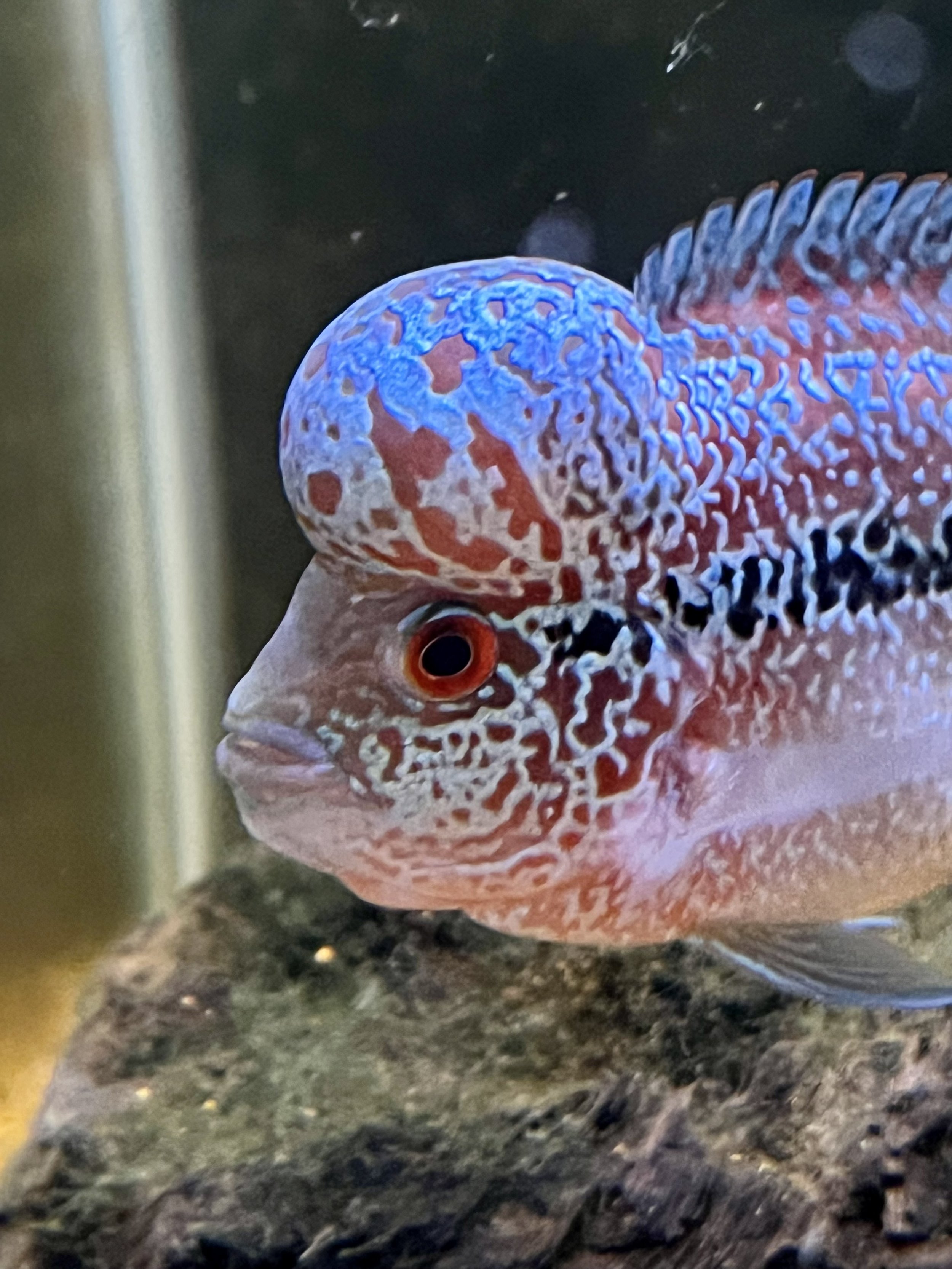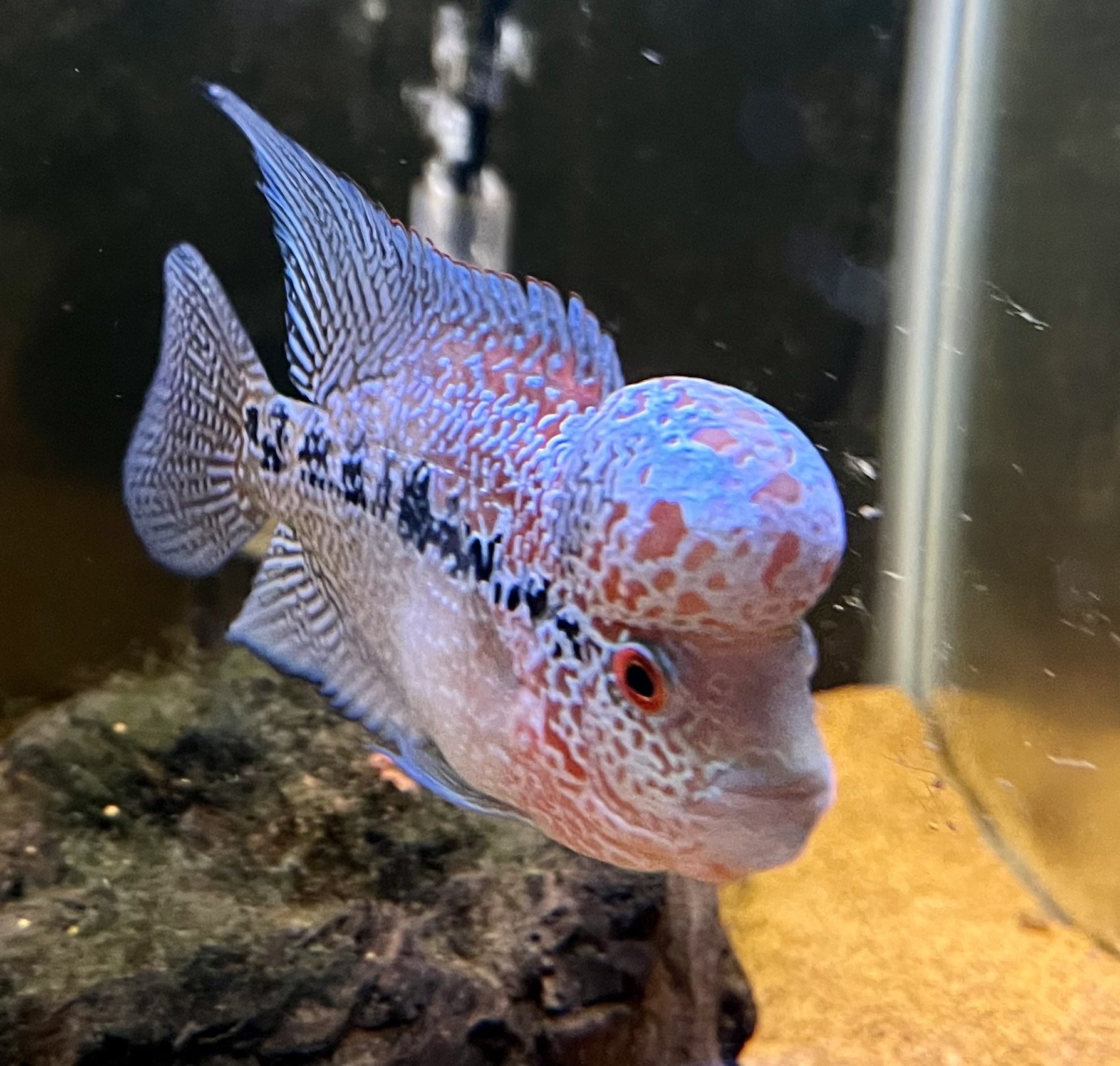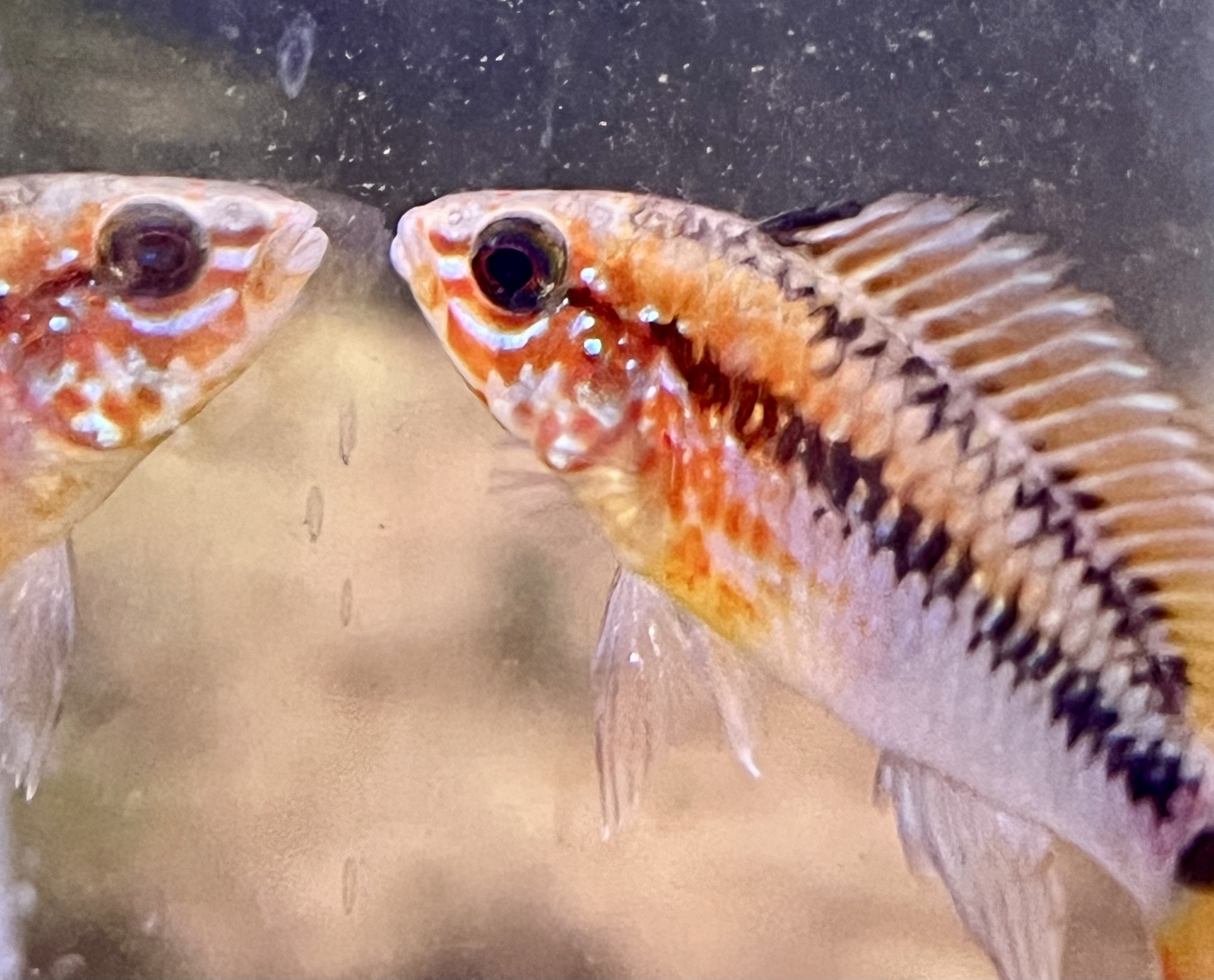 Image 1 of 3
Image 1 of 3

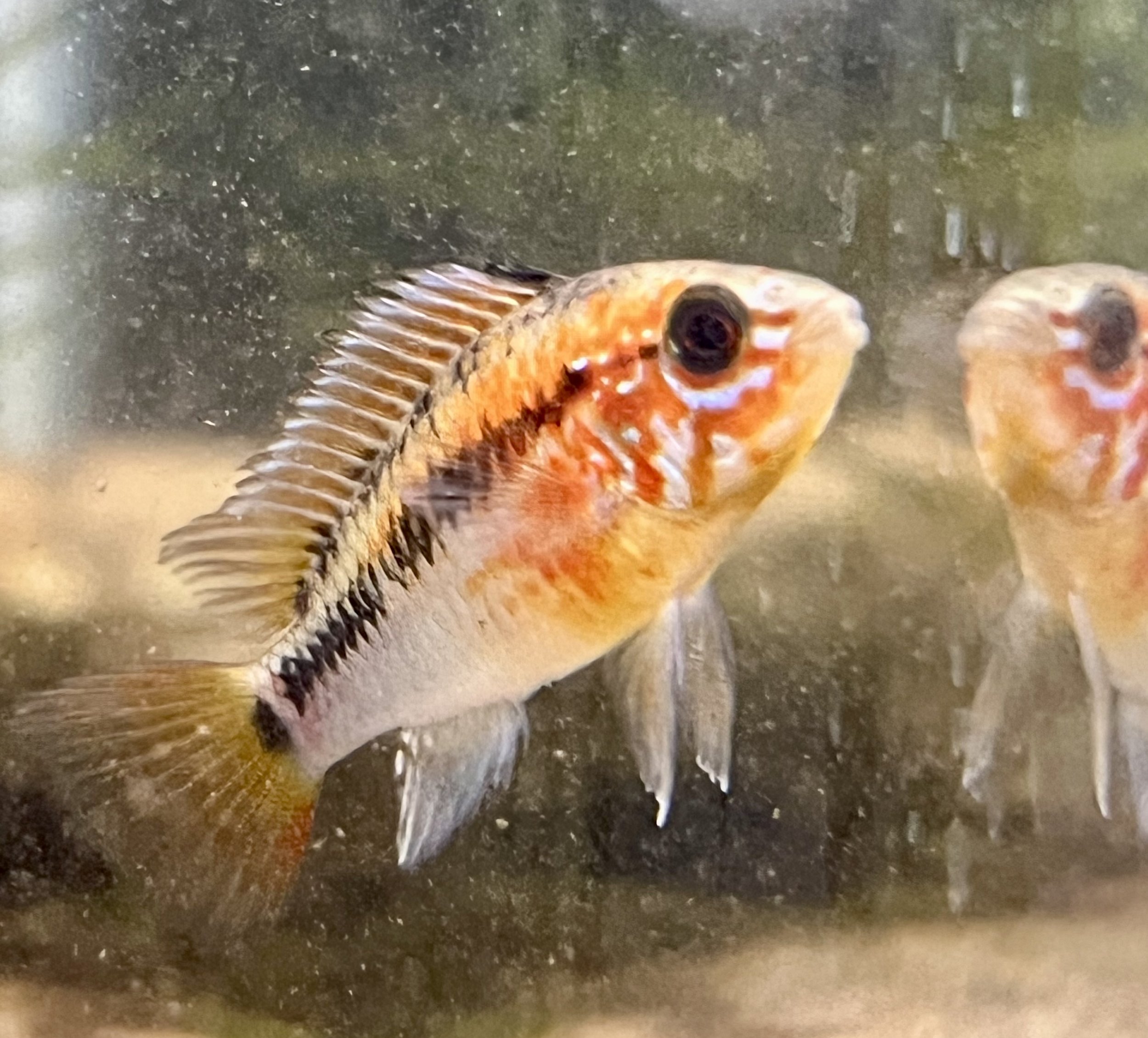 Image 2 of 3
Image 2 of 3

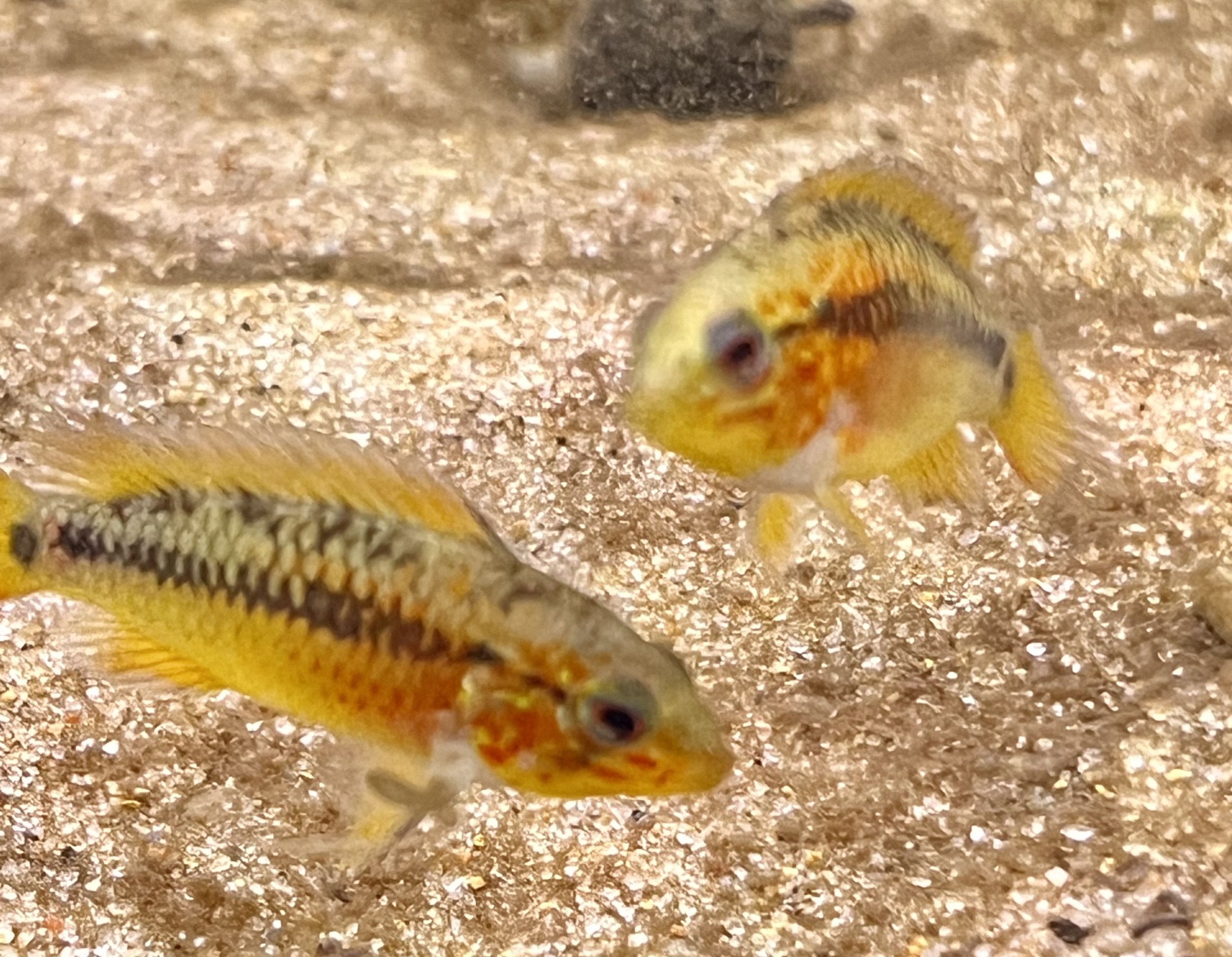 Image 3 of 3
Image 3 of 3




Apistogramma Macmasteri- M/L
The Apistogramma macmasteri, commonly known as the Macmaster’s Dwarf Cichlid, is a stunning species of South American cichlid that originates from the slow-moving rivers and streams of Colombia. Known for its vibrant coloration, engaging personality, and manageable size, this dwarf cichlid is a favorite among aquarists who appreciate colorful and active fish with complex social behaviors. Macmaster’s Dwarf Cichlids are ideal for well-planted tanks and biotope setups, and they do well in community tanks with peaceful tank mates.
Physical Description:
The Apistogramma macmasteri is known for its beautiful color palette and elegant fin structure. Males are larger and more colorful than females, displaying a vivid combination of red, orange, and yellow on their bodies and fins, often with iridescent blue highlights along the sides. They also feature dark black or blue markings on their faces and gill covers, adding contrast to their vibrant colors. The fins, especially the dorsal and caudal fins, are elongated in males and are often edged in bright colors, enhancing their visual appeal. Females are typically smaller and display more subdued yellow and brown tones with black markings. Adult males can grow up to 3 inches (7.5 centimeters), while females remain slightly smaller at around 2 inches (5 centimeters).
Aquarium Care:
Macmaster’s Dwarf Cichlids thrive in aquariums that mimic their natural habitat. A well-planted tank with soft, sandy substrates is ideal, as they like to sift through the substrate for food. Providing plenty of hiding spots, such as caves, driftwood, and rocks, is essential, as these fish are naturally territorial and enjoy having defined spaces. While they are generally peaceful, males can become territorial, especially during breeding, so it’s recommended to keep them in a tank of at least 20 gallons, with a layout that breaks up sightlines to reduce aggression. Apistogramma macmasteri does well in community tanks with other small, peaceful fish such as tetras, rasboras, and Corydoras, but avoid keeping them with larger or aggressive species.
Water Parameters:
Apistogramma macmasteri is adapted to soft, acidic water conditions found in its natural South American habitat. They prefer water with a pH range of 5.5 to 7.0 and temperatures between 75 to 82°F (24 to 28°C). Regular water changes and good filtration are important to maintain water quality, as these fish are sensitive to water conditions. Adding tannins through Indian almond leaves or driftwood can create a more natural blackwater effect, which these fish enjoy.
Feeding:
Macmaster’s Dwarf Cichlids are omnivorous and thrive on a varied diet. They readily accept high-quality pellets or flakes formulated for cichlids, but they benefit from live or frozen foods as well, such as bloodworms, brine shrimp, and daphnia. Offering a mix of protein-rich foods will enhance their color and health. They may also consume small amounts of plant matter or algae, but protein should make up the majority of their diet.
Breeding:
Breeding Apistogramma macmasteri in captivity is relatively straightforward, as they are substrate spawners. A dedicated breeding tank with caves or similar structures for the female to lay her eggs is recommended. Once the eggs are laid, the female guards and cares for them, while the male may patrol the territory. The eggs typically hatch in 2 to 3 days, and the fry become free-swimming after about a week. The fry can be fed infusoria or newly hatched brine shrimp until they grow large enough to accept crushed flakes or micro-pellets.
Overall:
The Apistogramma macmasteri is a visually stunning and relatively hardy dwarf cichlid that can be a highlight in any well-maintained aquarium. Their vibrant colors, fascinating behaviors, and suitability for community setups make them a popular choice among aquarists of all experience levels. With proper care, attention to water quality, and a suitable tank environment, these beautiful cichlids can thrive and even breed in captivity, adding both color and activity to your aquarium.
The Apistogramma macmasteri, commonly known as the Macmaster’s Dwarf Cichlid, is a stunning species of South American cichlid that originates from the slow-moving rivers and streams of Colombia. Known for its vibrant coloration, engaging personality, and manageable size, this dwarf cichlid is a favorite among aquarists who appreciate colorful and active fish with complex social behaviors. Macmaster’s Dwarf Cichlids are ideal for well-planted tanks and biotope setups, and they do well in community tanks with peaceful tank mates.
Physical Description:
The Apistogramma macmasteri is known for its beautiful color palette and elegant fin structure. Males are larger and more colorful than females, displaying a vivid combination of red, orange, and yellow on their bodies and fins, often with iridescent blue highlights along the sides. They also feature dark black or blue markings on their faces and gill covers, adding contrast to their vibrant colors. The fins, especially the dorsal and caudal fins, are elongated in males and are often edged in bright colors, enhancing their visual appeal. Females are typically smaller and display more subdued yellow and brown tones with black markings. Adult males can grow up to 3 inches (7.5 centimeters), while females remain slightly smaller at around 2 inches (5 centimeters).
Aquarium Care:
Macmaster’s Dwarf Cichlids thrive in aquariums that mimic their natural habitat. A well-planted tank with soft, sandy substrates is ideal, as they like to sift through the substrate for food. Providing plenty of hiding spots, such as caves, driftwood, and rocks, is essential, as these fish are naturally territorial and enjoy having defined spaces. While they are generally peaceful, males can become territorial, especially during breeding, so it’s recommended to keep them in a tank of at least 20 gallons, with a layout that breaks up sightlines to reduce aggression. Apistogramma macmasteri does well in community tanks with other small, peaceful fish such as tetras, rasboras, and Corydoras, but avoid keeping them with larger or aggressive species.
Water Parameters:
Apistogramma macmasteri is adapted to soft, acidic water conditions found in its natural South American habitat. They prefer water with a pH range of 5.5 to 7.0 and temperatures between 75 to 82°F (24 to 28°C). Regular water changes and good filtration are important to maintain water quality, as these fish are sensitive to water conditions. Adding tannins through Indian almond leaves or driftwood can create a more natural blackwater effect, which these fish enjoy.
Feeding:
Macmaster’s Dwarf Cichlids are omnivorous and thrive on a varied diet. They readily accept high-quality pellets or flakes formulated for cichlids, but they benefit from live or frozen foods as well, such as bloodworms, brine shrimp, and daphnia. Offering a mix of protein-rich foods will enhance their color and health. They may also consume small amounts of plant matter or algae, but protein should make up the majority of their diet.
Breeding:
Breeding Apistogramma macmasteri in captivity is relatively straightforward, as they are substrate spawners. A dedicated breeding tank with caves or similar structures for the female to lay her eggs is recommended. Once the eggs are laid, the female guards and cares for them, while the male may patrol the territory. The eggs typically hatch in 2 to 3 days, and the fry become free-swimming after about a week. The fry can be fed infusoria or newly hatched brine shrimp until they grow large enough to accept crushed flakes or micro-pellets.
Overall:
The Apistogramma macmasteri is a visually stunning and relatively hardy dwarf cichlid that can be a highlight in any well-maintained aquarium. Their vibrant colors, fascinating behaviors, and suitability for community setups make them a popular choice among aquarists of all experience levels. With proper care, attention to water quality, and a suitable tank environment, these beautiful cichlids can thrive and even breed in captivity, adding both color and activity to your aquarium.
The Apistogramma macmasteri, commonly known as the Macmaster’s Dwarf Cichlid, is a stunning species of South American cichlid that originates from the slow-moving rivers and streams of Colombia. Known for its vibrant coloration, engaging personality, and manageable size, this dwarf cichlid is a favorite among aquarists who appreciate colorful and active fish with complex social behaviors. Macmaster’s Dwarf Cichlids are ideal for well-planted tanks and biotope setups, and they do well in community tanks with peaceful tank mates.
Physical Description:
The Apistogramma macmasteri is known for its beautiful color palette and elegant fin structure. Males are larger and more colorful than females, displaying a vivid combination of red, orange, and yellow on their bodies and fins, often with iridescent blue highlights along the sides. They also feature dark black or blue markings on their faces and gill covers, adding contrast to their vibrant colors. The fins, especially the dorsal and caudal fins, are elongated in males and are often edged in bright colors, enhancing their visual appeal. Females are typically smaller and display more subdued yellow and brown tones with black markings. Adult males can grow up to 3 inches (7.5 centimeters), while females remain slightly smaller at around 2 inches (5 centimeters).
Aquarium Care:
Macmaster’s Dwarf Cichlids thrive in aquariums that mimic their natural habitat. A well-planted tank with soft, sandy substrates is ideal, as they like to sift through the substrate for food. Providing plenty of hiding spots, such as caves, driftwood, and rocks, is essential, as these fish are naturally territorial and enjoy having defined spaces. While they are generally peaceful, males can become territorial, especially during breeding, so it’s recommended to keep them in a tank of at least 20 gallons, with a layout that breaks up sightlines to reduce aggression. Apistogramma macmasteri does well in community tanks with other small, peaceful fish such as tetras, rasboras, and Corydoras, but avoid keeping them with larger or aggressive species.
Water Parameters:
Apistogramma macmasteri is adapted to soft, acidic water conditions found in its natural South American habitat. They prefer water with a pH range of 5.5 to 7.0 and temperatures between 75 to 82°F (24 to 28°C). Regular water changes and good filtration are important to maintain water quality, as these fish are sensitive to water conditions. Adding tannins through Indian almond leaves or driftwood can create a more natural blackwater effect, which these fish enjoy.
Feeding:
Macmaster’s Dwarf Cichlids are omnivorous and thrive on a varied diet. They readily accept high-quality pellets or flakes formulated for cichlids, but they benefit from live or frozen foods as well, such as bloodworms, brine shrimp, and daphnia. Offering a mix of protein-rich foods will enhance their color and health. They may also consume small amounts of plant matter or algae, but protein should make up the majority of their diet.
Breeding:
Breeding Apistogramma macmasteri in captivity is relatively straightforward, as they are substrate spawners. A dedicated breeding tank with caves or similar structures for the female to lay her eggs is recommended. Once the eggs are laid, the female guards and cares for them, while the male may patrol the territory. The eggs typically hatch in 2 to 3 days, and the fry become free-swimming after about a week. The fry can be fed infusoria or newly hatched brine shrimp until they grow large enough to accept crushed flakes or micro-pellets.
Overall:
The Apistogramma macmasteri is a visually stunning and relatively hardy dwarf cichlid that can be a highlight in any well-maintained aquarium. Their vibrant colors, fascinating behaviors, and suitability for community setups make them a popular choice among aquarists of all experience levels. With proper care, attention to water quality, and a suitable tank environment, these beautiful cichlids can thrive and even breed in captivity, adding both color and activity to your aquarium.

